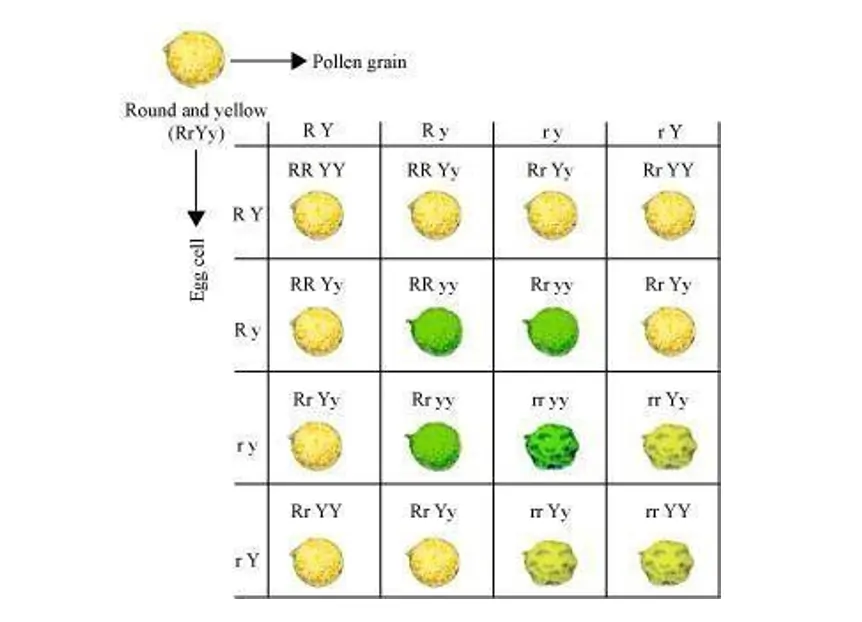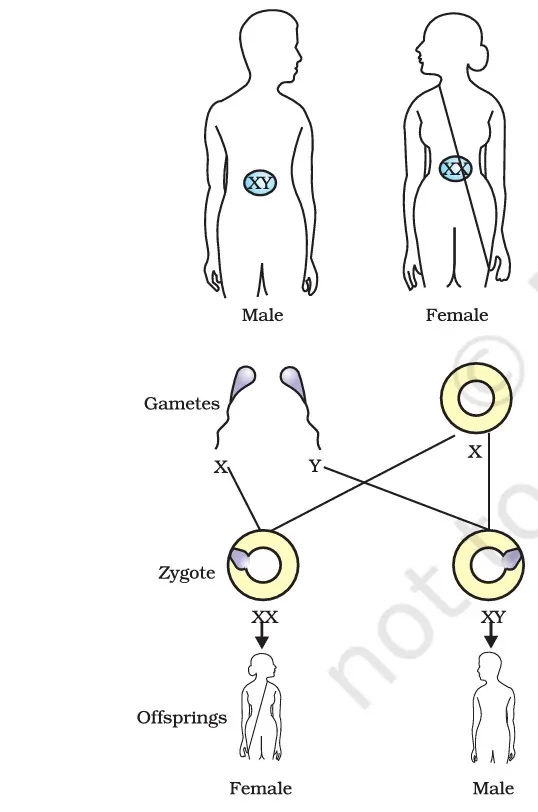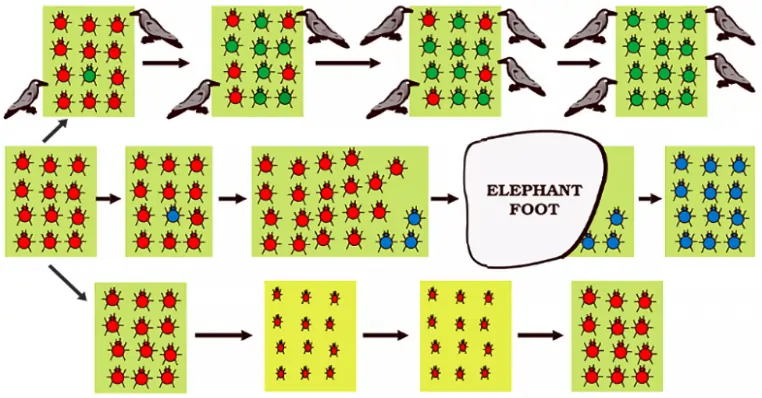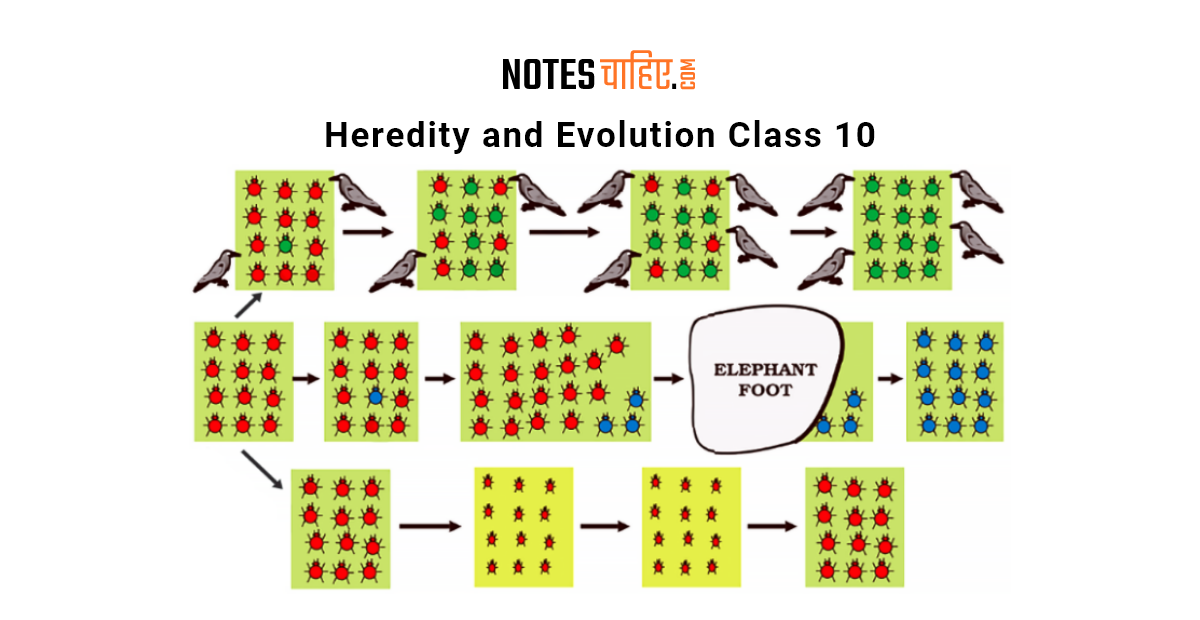Heredity the fascinating field of science that unravels the mysteries behind the passing of traits from one generation to another, holds a significant place in our understanding of life. Evolution is described as the progressive process through which a primitive living form leads to the evolution of complex organisms over multiple generations.
This chapter will teach us about the mechanism by which variations are formed, the principles of heredity that govern their inheritance pattern, and how the accumulation of these variants leads to evolution.
You guys will get all the important topics of the heredity chapter in this heredity note.
Explain Heredity
Heredity refers to the transmission of qualities from one generation to the next. Genes are functional units of heredity that pass along traits from parents to children. Genes are DNA segments that code for a specific protein or RNA.
Genetics is the branch of biology that studies genes, inheritance, and variation.
Sexual Reproduction
- One male and one female are involved in the reproductive mode.
- They generate sex cells or gametes, which join together to form a new organism.
Genes
- A heredity is a functional unit of genes.
- Every gene regulates one or more specific characteristics of living creatures.
Mendel’s Experiment
Mendel began his work with pea plants. He performed monohybrid and later dihybrid crossings.
Monohybrid Cross
Monohybrid crosses are those in which Mendel demonstrated the inheritance of dominant and recessive traits. To examine the inheritance of a single contrasting pair of features
He conducted an experiment by crossing pure tall pea plants (genotype TT) with pure dwarf pea plants (genotype tt).
The outcome of this cross resulted in the first generation, referred to as the F1 generation, which comprised exclusively of tall plants’ heredity.
This indicated the dominance of one parental trait over the other, with no visible blend of the two traits.
Subsequently, the plants from the F1 generation were allowed to self-pollinate, leading to the production of the second generation, known as the F2 generation.
In the F2 generation, the observed plant heights were not uniform. Approximately 75% of the plants were tall, while the remaining 25% were dwarf.
This phenotypic ratio of 3:1 demonstrated that both tall and dwarf traits were inherited in the F2 generation, but the tall trait was expressed dominantly.
It was deduced that tallness represents a dominant trait, whereas dwarfness represents a recessive trait.
Analyzing the genetic makeup of the F2 generation revealed a genotypic ratio of 1:2:1, corresponding to three distinct plant types represented by the genotypes TT, Tt, and tt.
This ratio emerged as a result of the cross between the two parental genotypes in the experiment.
Dihybrid Cross
Mendel conducted experiments involving the inheritance of two sets of contrasting characteristics, a phenomenon known as a dihybrid cross.
In his research, he crossbred pea plants that had round green seeds with those that had wrinkled yellow seeds.
When observing the first generation (F1), all the seeds were round and yellow. This indicated that the dominant traits were round shape and yellow colour, while the wrinkled shape and green colour were recessive.
Mendel then proceeded to self-pollinate the F1 generation plants to create the second generation (F2).
In the F2 generation, he observed four distinct seed types: round yellow, round green, wrinkled yellow, and wrinkled green, in a ratio of 9 : 3 : 3: 1, respectively.
This outcome led him to the conclusion that the inheritance of traits occurred independently of one another.
How do traits get expressed?
- DNA in cells holds the instructions for making proteins.
- Each protein-making instruction is a “gene” in the DNA.
- Example: A plant’s height is controlled by a gene that affects its growth hormone.
- If the gene works well, the plant becomes tall due to more growth hormones.
- But if the gene changes, less hormone is made, and the plant stays short.
- In reproduction, both parents share genes equally.
- Parents give a copy of the same gene to their offspring.
- Example: Crossing tall and short plants results in gametes (reproductive cells) with genes for either tallness or shortness.
- The first offspring generation (F1) inherits both tallness and shortness genes.

How Genes Pass to Gametes:
- Parents have two sets of genes, but gametes only get one set each.
- Genes are on structures called chromosomes, not one long piece of DNA.
- Each cell normally has two sets of chromosomes, one from each parent.
- Gametes only end up with one set due to a special division during their creation.
- When fertilization happens, the right number of chromosomes is restored in the offspring.
- This keeps the species’ DNA stable.
Determining Newborn’s Gender:
- How can we tell if a newborn is a boy or a girl?
- This process figures out the gender of a newborn individual.
Sex determination in human beings
- In people, not all chromosomes come in pairs.
- Most of our chromosomes (22 pairs) are matched up, but there’s a special set called sex chromosomes.
- Among males, this sex chromosome pair is a bit different.
- Females have a perfect pair of matching sex chromosomes: two X’s (XX).
- Males have one regular-sized X and a smaller one called Y, making their pair XY.
- When females make eggs (ova), they all contain an X chromosome.
- But in males, there are two types of sperm: some with X and others with Y.
- The sex of a future baby is determined by which type of sperm fertilizes the egg.

Autosomes: Chromosomes that don’t have any part in deciding whether someone is male or female.
Sex chromosomes: Chromosomes have a role in determining if a baby will be a boy or a girl.
- If a special kind of sperm with an X chromosome meets an egg with an X chromosome, the baby will have two XX chromosomes and be a girl.
- But if a different kind of sperm with a Y chromosome meets an egg with an X chromosome, the baby will have one X and one Y chromosome (XY), and that makes a baby boy.
Evolution:
- Evolution is a gradual process where ancient living things changed over millions of years to become the species we see today.
- New species emerged because of changes in DNA copying and how organisms reproduce through mating.
- Picture this: Twelve red beetles living in green bushes. They have babies by mating, so there’s a chance for differences to appear.
- Let’s look at the possibilities:
First situation:
Crows find it easy to snatch and eat red beetles when they’re among green bushes. This color difference comes from how they reproduce, causing green beetles to show up.
These green beetles have babies, and their group gets bigger.
Because crows can’t really see green beetles well, more of them appear, while the number of red beetles goes down. This sort of difference helps the green beetles do well and stay safe.
Second situation:
A group of beetles comes in two colors, red and blue. Birds called crows can see both colors and eat these beetles. At first, there are more red beetles and only a few blue ones.
Then, something bad happens – an elephant accidentally squashes the red beetles when it steps on a bush. But the blue beetles survive this accident, have babies, and their population grows.
This situation doesn’t really give the blue beetles a special advantage for survival, but it does add variety without any particular reason.
Third situation:
When there are more beetles around, the bushes they live in get sick, and there isn’t enough food for them. This makes the beetles become smaller.
After a while, when the plants are healthy again and there’s lots of food, the beetles go back to being their normal size. This change doesn’t get passed on to their babies.

Charles Darwin’s Idea of Evolution:
His theory of evolution was rooted in the notion that new species came about because of changes happening in organisms. Nature had a key role in picking out the organisms with favourable changes.
Natural selection:
According to Darwin, when new species of plants and animals develop, a big part of it is because of natural selection.
He thought that within a group, some individuals were a bit different from others. And when nature did its thing, those that weren’t so well-suited didn’t make it.
The ones that survived would give their good traits to their kids.
As time went on, this whole process made the group change so much that it became a whole new bunch of living things – that’s how new species came to be.
Isolation:
Imagine a bunch of animals of the same type splitting into two groups. These groups can’t have babies together anymore and end up becoming different kinds of animals.
For example, picture beetles living on a mountain.
Some of them start munching on bushes in another part of the mountain, creating a new bunch. These beetles make babies within their new group, passing on their special traits.
As time goes by, these two groups can’t make babies with each other because they’ve changed so much.
This leads them to become unique kinds of beetles, basically forming new types of animals.
Evolution and Classification:
- Different living things have special qualities like how they look and act. These are called characteristics. For example, plants can do something called photosynthesis.
- Some traits are really basic and lots of living things share them.
- The more traits two species share, the more they’re connected. If they’re closely connected, it means they had a common ancestor.
- Let’s use an example to understand: Imagine a brother and a sister. They have a lot of similar family traits because they have the same parents. Now, think about cousins. They share some traits, but not as many as siblings do. That’s because siblings come from a more recent common ancestor than cousins.
- We can use this idea to figure out how species are related through time. We have some tools to help us with this:
Homologous organs:
These are organs that share a common structure and origin in development, but they serve different purposes and look different.
For instance, consider the front limbs of a frog, lizard, bird, bat, and human. Even though they all have the same bone structure, they each do different jobs.
Analogous organs:
Organs with distinct origins and structures but similar looks and functions are known as analogous organs. For instance, consider the wings of a bat and a bird.
Although these wings have different fundamental designs and develop differently, they appear alike and serve a similar purpose.
In the case of bats, their wings are formed from stretches of skin connecting their fingers. Meanwhile, birds’ wings are actually adapted front limbs that have evolved for flight.
Class 10 Science Notes List
Chapter of class 10 science basically includes some important Chapter topics from the NCERT Book, Such as acids bases and salts, metals and non-metals, chemical reactions and equations, Carbon and its Compounds, Life Processes, Control, and Coordination, etc.
Chapter-wise notes on these subjects are available in the table below, click on the links to access them.
- Chapter 1 Chemical Reactions and Equations Class 10 Notes
- Chapter 2 Acids Bases and Salts Class 10 Notes
- Chapter 3 Metals and Non-metals Class 10 Notes
- Chapter 4 Carbon and its Compounds Class 10 Notes
- Chapter 5 Periodic Classification of Elements Class 10 Notes
- Chapter 6 Control and Coordination Class 10 Notes
- Chapter 7 How do Organisms Reproduce Class 10 Notes
- Chapter 8 Heredity and Evolution Class 10 Notes
- Chapter 9 Light Reflection and Refraction Class 10 Notes
- Chapter 10 Human Eye and Colourful World Class 10 Notes
- Chapter 11 Electricity Class 10 Notes
- Chapter 12 Magnetic Effects of Electric Current 10 Notes
- Chapter 13 Our Environment Class 10 Notes

